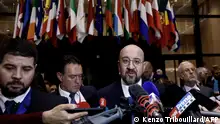Europe
The Day the EU Was Born
On March 25, 1957, representatives of the six founding countries met in the Italian capital to sign the Treaties of Rome, the cornerstone documents of what would become the European Union.
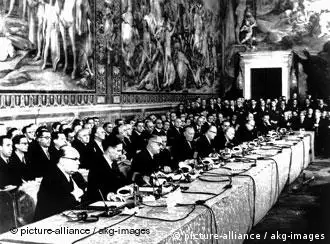
Delegates of six countries met in Rome to establish what would become the European Union
Children in Rome didn't have to go to school and the shopkeepers didn't open their doors that day. The whole city was busy celebrating the most significant event since the end of World War II.
Curious spectators waited in front of the capital city's important hotels to catch a glimpse of the foreign ministers and delegations from Italy, Germany, France, Belgium, the Netherlands and Luxemburg as students ran through the streets waving flags from all six countries.
Sign for peace
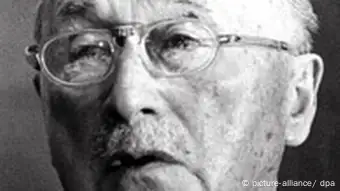
Jean Monnet had served as president of the European Coal and Steel Community
Someone had prepared an oversized poster that read, "A signature to guarantee peace." The foreign ministers of six European countries penned that signature on Rome's Capitol Hill on March 25, 1957 when they ratified the treaties establishing the European Economic Community and the European Atomic Community.
"We certainly don't want to applaud ourselves too early, since we have a lot of work ahead of us," said then German Chancellor Konrad Adenauer. "But our joy over the fact that we have the honor of taking this momentous step toward the unification of Europe, which is represented in the signing of the two treaties -- I would like to express this joy, which is shared by millions upon millions of our people, who are with us in spirit at this very moment."
Compromise and cooperation
Public celebrations in Rome in honor of the new Europe were flooded by heavy spring rains. Yet the path to the Treaties of Rome had not been a sunny one. They were the result of long discussions and much compromise.
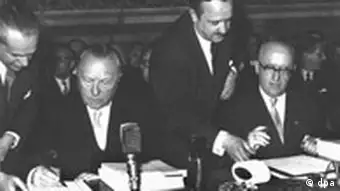
With the signature of its Chancellor Konrad Adenauer, Germany entered into the union
France, for example, was already an atomic power and wanted to exclude military elements from a common European atomic policy. Only under this condition was it willing to enter into a European economic agreement.
Germany, on the other hand, had a built up a strong economy in the post-war decade and advocated a European market that included getting rid of internal tariffs and establishing joint external tariffs. Without this, Germany wasn't prepared to join the European atomic community.
In the end, however, political circumstances outside of Europe played a decisive role in the final version of the treaties, said historian Georg Kreis.
Need for alternative energy
"The international situation was quite unfavorable," Kreis said. "Some believe that the European Community should erect a monument to the Egyptian head-of-state Nasser because he made Europe aware of its dependence on petroleum with his Suez Canal policy."
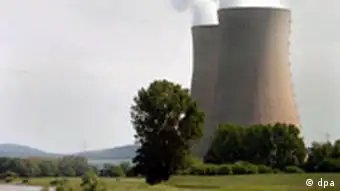
The need for an alternative to petroleum helped bring Europe together
In the 1950s, petroleum already represented one fifth of Europe's energy consumption and was becoming an increasingly important energy source. The nationalization of the Suez Canal in 1956 led to stronger cooperation within Europe in developing civilian applications for nuclear technology.
Jean Monnet, a French diplomat and one of the authors of the Treaties of Rome, wrote in his memoirs: "I have always believed that Europe will be made in times of crisis and that it is the sum of the solutions that are found in these crises."
Several years before Monnet was to draw up the details of a plan for European unification, it was proposed by France's foreign minister at the time, Robert Schuman.
An end to war on European soil
Coal and steel, the basic ingredients for armament, should be placed under the control of a common administration so that another war between France and Germany would become "not only unthinkable, but also materially impossible," Schuman said.
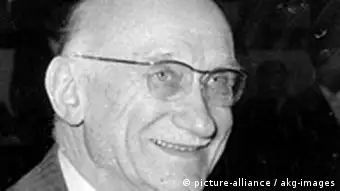
Robert Schuman gave impulse to unification in the early 1950s
"Europe should stop being a battlefield where adversarial forces bleed to death," he said in 1951, when the European Coal and Steel Community was formed. "We want to pull ourselves out of this so costly self-conception and blaze new paths that lead us to a unified and, finally, peaceful Europe."
Even after the foundation had been laid, the formation of a unified Europe progressed slowly. Plans for a European defense community and political union failed.
Then, at the Messina Conference in the summer of 1955, European integration made its way onto the agenda under two different headings: The economy and nuclear technology.
In retrospect, the documents signed on Capital Hill in Rome on March 25, 1957 are typical of the European Union in that they were woven together with a great deal of compromise.
DW recommends
- Date 23.03.2007
- Author Bettina Bräuniger (kjb)
- Related Subjects EU migration policy, European Union (EU), Energy communities
- Keywords eu, european union, european community, treaty of rome
- Print Print this page
- Permalink https://p.dw.com/p/A3g4
- Date 23.03.2007
- Author Bettina Bräuniger (kjb)
- Related Subjects EU migration policy, European Union (EU), Energy communities
- Keywords eu, european union, european community, treaty of rome
- Print Print this page
- Permalink https://p.dw.com/p/A3g4


